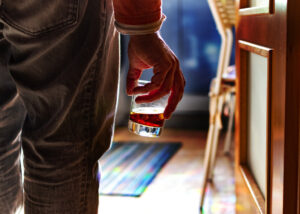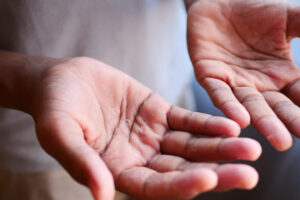Rosacea, a chronic skin condition that presents as facial redness, flushing, and sometimes the appearance of tiny blood vessels, is a common yet often misunderstood affliction. While its exact cause remains uncertain, research has shed light on potential triggers and aggravating factors. One such factor that has gained attention is excessive alcohol consumption. In this article, we delve into the relationship between alcohol consumption and the development or exacerbation of rosacea, shedding light on how drinking can contribute to this skin condition.
The Complex Nature of Rosacea
Rosacea is a multifaceted condition that varies in severity and presentation. It commonly affects the central portion of the face, including the cheeks, nose, forehead, and chin. Flushing, persistent redness, bumps, and visible blood vessels are characteristic features of rosacea. While its precise cause is still under investigation, factors like genetics, immune system responses, and environmental triggers play a role in its development.
Active Recovery Companions: A Holistic Approach
For individuals seeking to manage rosacea while on the journey to recovery, a holistic approach can be invaluable. Programs like Active Recovery Companions offer comprehensive support for individuals in recovery from addiction. This approach not only addresses the challenges of sobriety but also focuses on mental well-being and overall health. By providing companionship, guidance, and a structured path to recovery, programs like Active Recovery Companions can contribute to improved skin health and overall quality of life.
The Alcohol Connection
Research suggests a clear link between alcohol consumption and the onset or worsening of rosacea symptoms. Alcohol’s ability to dilate blood vessels is a primary factor in this connection. Excessive alcohol consumption triggers vasodilation, causing blood vessels on the face to expand and resulting in redness and flushing. This effect is particularly pronounced in individuals with rosacea, as their blood vessels are already sensitive and prone to dilation.
Types of Alcoholic Beverages
It’s important to note that not all alcoholic beverages have the same impact on rosacea. While the mechanism of vasodilation is consistent across different types of alcohol, certain beverages may be more likely to trigger rosacea symptoms. Studies have indicated that red wine, for example, is often cited as a trigger due to its higher content of histamine and other compounds that exacerbate facial redness and flushing.
Rosacea Flare-Ups and Excessive Drinking
Individuals with a predisposition to rosacea are more likely to experience flare-ups when consuming excessive amounts of alcohol. The term “alcohol-induced rosacea” has emerged to describe the phenomenon where heavy drinking triggers or exacerbates rosacea symptoms. This can lead to a cycle where the appearance of rosacea leads to increased stress and anxiety, which in turn can trigger more flare-ups—a vicious cycle that impacts both physical and emotional well-being.
Taking Control of Rosacea
Understanding the connection between alcohol and rosacea is the first step toward managing the condition effectively. Limiting alcohol consumption or abstaining altogether can lead to a reduction in flare-ups and overall improvement in skin health. Incorporating stress-reduction techniques, maintaining a consistent skincare routine, and seeking support from professionals are additional steps that can make a positive difference.
Conclusion
The relationship between alcohol consumption and rosacea is a complex one, with vasodilation triggered by excessive drinking contributing to the development or exacerbation of this chronic skin condition. For those on the path to recovery, programs like Active Recovery Companions offer a comprehensive approach to managing rosacea and overall well-being. By understanding the triggers and making informed choices, individuals can take control of their rosacea and enjoy healthier, more radiant skin.



